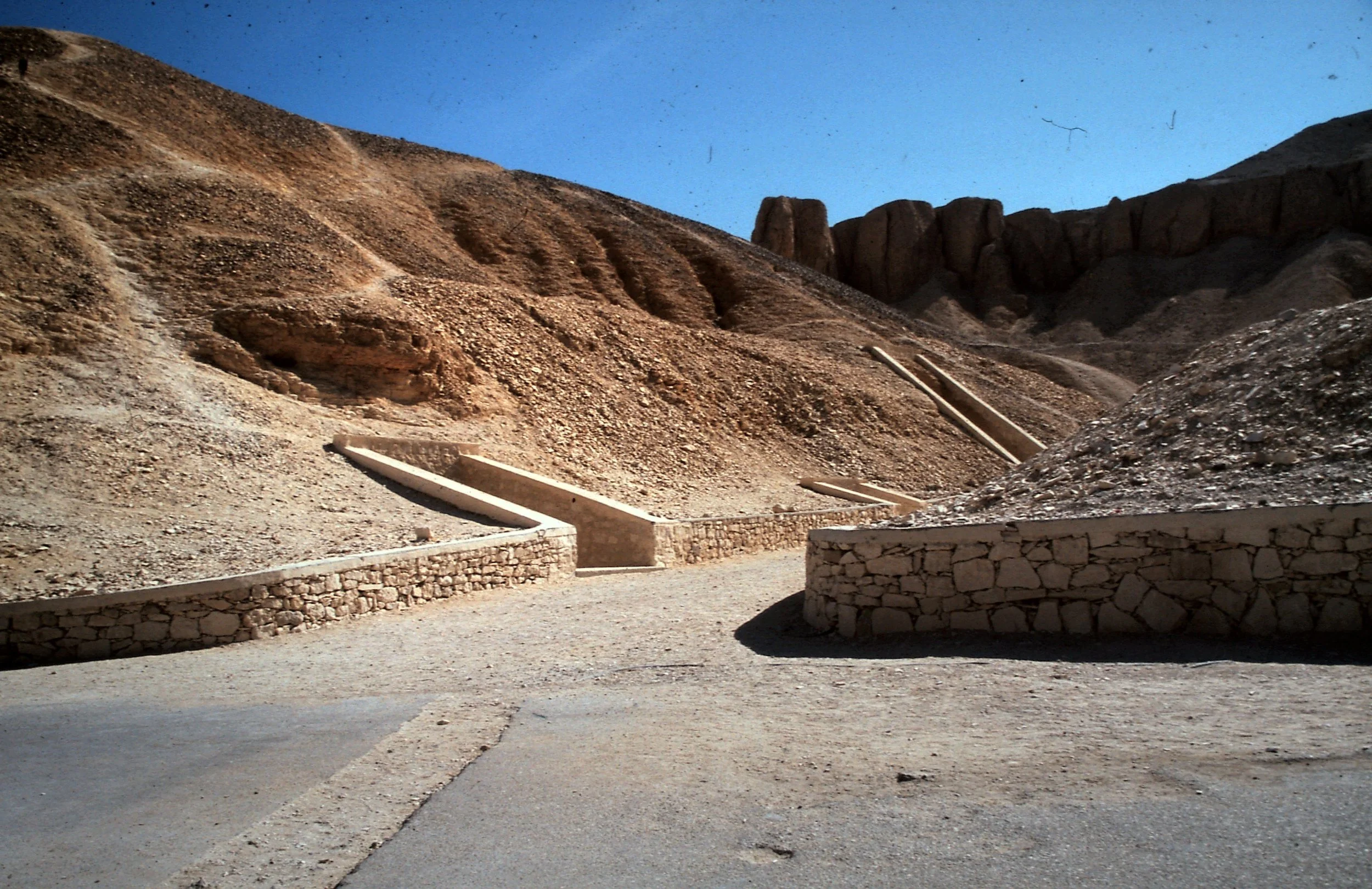Valley of the Kings
Where Pharaohs Sleep Eternal
Centuries after the pyramids, Egypt’s rulers abandoned the idea of towering monuments visible to all. Instead, they sought secrecy. On the west bank of the Nile, hidden within barren cliffs, lies the Valley of the Kings. From the surface, it looks plain, even empty—just limestone hills and dry wadis. But beneath, corridors stretch into the rock, twisting, descending, opening into chambers painted with stars and spells. Tombs for pharaohs, carved not to be seen, but to be concealed.
The site itself is not random. Rising above the valley is the peak of el-Qurn, a mountain shaped like a natural pyramid. To the ancient Egyptians, this was no coincidence. The pyramid had long been a symbol of resurrection, and here, nature provided one without the need to build. The valley was both a sanctuary and a fortress, meant to hide its secrets from the living world.
Experience the Valley
One specific tomb has become legendary. It was discovered when most believed the valley to be exhausted. Tutankhamun’s burial, KV62, became the most famous, and he the most legendary pharaoh—not because of grandeur, or even his reign. The tomb is small, awkwardly angled, and far from the largest in the valley. His rule left little behind, his name nearly forgotten. Its size and layout suggest it was never meant for him, but pressed into use when the boy king died unexpectedly. And yet inside was something that would change our view of the pharaohs: a chamber crowded with treasures, a funerary mask of gold, and a tomb that survived largely because it was overlooked.
Other burials speak less, but no less powerfully. KV55 is undecorated, its inscriptions erased, its artifacts pulled from different contexts. A single coffin was found with the face cut away, the name removed. The effort to obscure was deliberate, systematic, but not total. Fragments still tie the burial to the Amarna period, and to one of the most turbulent chapters in Egypt’s history.
And then there is KV5. For a century it was thought unremarkable, until modern excavation revealed over 120 chambers stretching beneath the rock, with passages still unexplored. The tomb is believed to have housed the sons of Ramesses II, but its sheer scale remains unmatched anywhere else in the valley. It is not a tomb in the singular sense, but a complex—planned, extended, and multiplied beyond expectation.
Even the smallest details matter. Quarry marks left by the workers—simple sketches, names of crews, even jokes—still line the walls of unfinished chambers. “The Drunkards of Menkheperre,” one team called themselves. These marks were never meant to be seen, yet remain preserved for thousands of years. They are not royal proclamations, but voices of ordinary men working in the dark, carving eternity out of stone.
And still the valley has not finished giving. In the 21st century, radar scans and geological surveys have revealed anomalies beneath the rock—cavities that may yet prove to be chambers. Some are large enough to be tombs, others are smaller, harder to define. No spades have reached them yet, and perhaps they never will. The cliffs keep their silence, even as technology presses closer.
Experience the Valley
The Valley of the Kings is not a graveyard in the common sense. It is an archive carved underground: unfinished tombs, erased names, sprawling labyrinths, worker’s graffiti, voids detected but unseen. Its treasures are not all gold and sarcophagi. Some of the most telling details are those hidden marks, those deliberate erasures, those vast empty corridors that speak as much as the decorated ones. Unlike the pyramids, its grandeur is not above ground but buried, and like them, each discovery adds weight—not to legend, but to the very real ingenuity and ambition of a civilization still managing to perplex us across three thousand years.
The Valley awaits.






